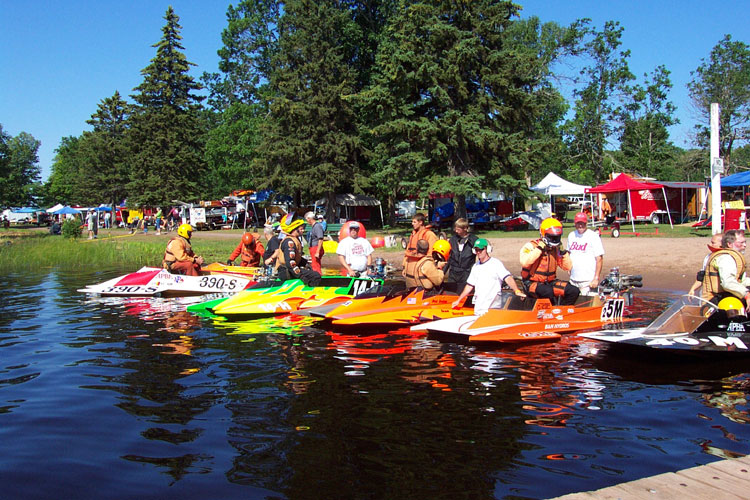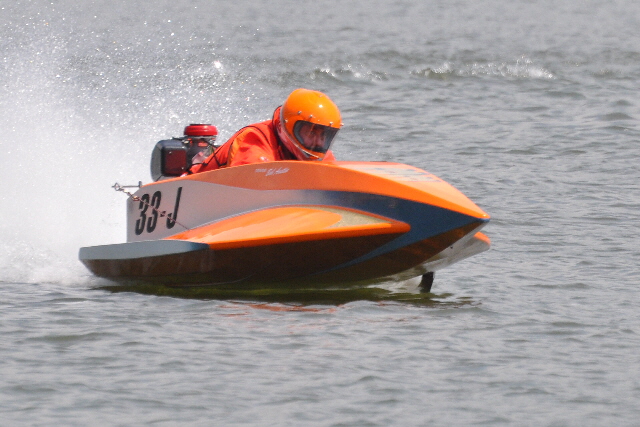
The announcer calls the first heat. Drivers prepare by donning their Kevlar driving suits and life jackets; the drivers and their pit crews launch the boats. The driver climbs in and straps on the helmet as the pit crew points the boat towards the course and gives the rig a final check.
Two to four minutes before the race starts a green flag is displayed on the judge’s stand. The engines are started and up to twelve boats roar on plane as they head to the far end of the course, the milling area.
“Catch your breath, get a drink, and gas up your rig; you have another heat to run!”

Over the next couple of minutes before the actual start of the race, some drivers will make a run at the clock trying to time the start; other drivers will circle the far end of the course to pick a starting lane.
One minute before the race starts a 60 second clock begins its countdown to zero. A white flag is displayed on the judge’s stand and the tension in the pits rises. Your breathing quickens, your heart is pounding, and you feel the adrenaline kick in. The drivers jockey for position while watching the clock countdown, at 30 seconds most boats are committed to a lane, by 15 seconds the throttles are squeezed and the boats accelerate towards the starting line.
The driver’s goal is to hit the line at top speed just as the clock hits zero. If you’re early you’re disqualified, but you can still race the heat. If you’re late you have a lot of distance to make up, not an easy thing to do with the level of competition.
The run to the first turn is a drag race and it’s not unusual for several boats to get there at the same time. Typically one boat comes out first with 11 chargers closing in from behind.
Unlike a car race, conditions change on this race course with every lap and new challenges await you at every turn. At the start of the last lap a white flag is again displayed signaling one lap to the finish. If you are in a close race you have been driving hard, very hard to maintain your position and stamina can start to play a part. Coming into the last turn you take one last look to the inside making sure no one has closed up and taken the turn away from you; you’re clear and the turn is yours. That checkered flag on the judge’s stand is what you’re looking for and in a few more seconds the race is over.
After crossing the finish line you maintain a straight line while taking a few seconds to look around and see where your competitors finished. The black flag is displayed after the last boat crosses the line and you head for your pit area.
Catch your breath, get a drink, and gas up your rig; you have another heat to run!
Scoring
The race starts when the one-minute clock hits zero, if you are early you “jumped the gun” and you will not be scored for the heat. When the race begins the timer starts recording the race time. As each boat finishes, the time for the boat is recorded and points are awarded based on position.
At the conclusion of the second heat the points for both heats are totaled and the driver with the most points is awarded the win. If there is a points tie the scorers review the times for both heats and the driver with the fastest time gets the win.
Flags
Information is relayed to the drivers on the course by colored flags displayed at the judge’s stand and in the patrol boats.
- Green Flag- the course is open
- White Flag- one minute to the start, last lap in the race
- Checkered Flag- finish of the race displayed at the judge’s stand only
- Black flag- return to the pit area immediately
- Red flag- race is stopped, wait for further instructions
- Blue/White Flag- stalled or flipped boat on the course
